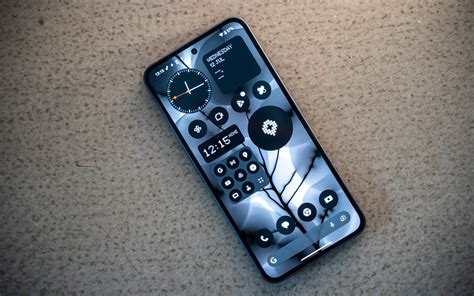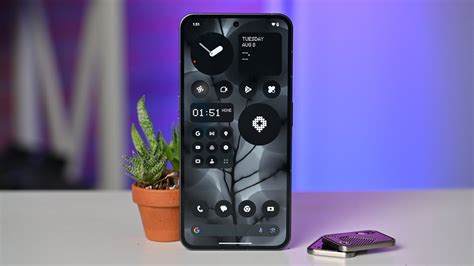In the ever-evolving world of technology, contemporary smartphones stand at the forefront of innovation, offering a blend of cutting-edge features and sleek design. As we delve into the latest models, this comprehensive review will explore the myriad advancements shaping today’s mobile devices. From the meticulous craftsmanship of design and build quality to the brilliance of display technology, we’ll scrutinize every aspect that defines a smartphone’s performance. We’ll also assess camera capabilities, software versatility, battery life, and connectivity options, providing an in-depth analysis of how these innovations enhance user experience. Join us as we uncover what sets these modern marvels apart.
Join inxos.xyz for a detailed examination of this topic.
1. Design and Build Quality: Assessing the aesthetics, materials used, and ergonomic considerations.
When evaluating contemporary smartphones, design and build quality are crucial elements that significantly impact user experience. Modern smartphones often showcase a blend of aesthetics and functionality, with manufacturers focusing on premium materials and cutting-edge design philosophies. High-end models typically feature sleek glass or metal finishes, providing a sophisticated appearance and enhancing durability. The choice of materials, such as aerospace-grade aluminum or Gorilla Glass, not only contributes to a phone’s resilience but also influences its weight and feel in hand.
Ergonomics play a vital role in design, ensuring that smartphones are comfortable to hold and use. Attention is given to factors such as the device’s thickness, weight distribution, and button placement, which affect usability during extended use. Modern smartphones often incorporate curved edges and slim profiles, making them easier to grip and less likely to cause hand fatigue.
In addition to physical attributes, design trends also embrace functional aesthetics. Features like edge-to-edge displays and minimal bezels maximize screen real estate while maintaining a sleek profile. Some models introduce unique elements such as foldable screens or retractable cameras, pushing the boundaries of traditional design. Overall, the focus on combining visual appeal with practical functionality reflects the ongoing evolution in smartphone design, aiming to enhance both style and usability for a seamless user experience.

2. Display Technology: Reviewing screen resolution, size, brightness, and color accuracy.
The display technology of contemporary smartphones is a key factor in delivering an exceptional user experience, with advancements in screen resolution, size, brightness, and color accuracy. Modern smartphones typically feature high-resolution displays, such as Full HD+, Quad HD, or even 4K, providing crisp and clear visuals for a range of activities from streaming videos to gaming. The increased pixel density ensures that text and images are sharp and detailed, enhancing overall screen quality.
Screen size has also evolved, with many smartphones now boasting expansive edge-to-edge displays that maximize viewing areas while maintaining a manageable device size. Larger screens offer more immersive experiences, whether for multimedia consumption or multitasking, without sacrificing portability.
Brightness is another critical aspect of display technology. High brightness levels, often measured in nits, ensure visibility even in direct sunlight, making outdoor use more practical. Advanced display panels also incorporate adaptive brightness features, automatically adjusting based on ambient light conditions.
Color accuracy is crucial for a vibrant and true-to-life visual experience. Modern smartphones employ technologies such as AMOLED or OLED screens, which provide rich, deep colors and high contrast ratios. These displays also support wide color gamuts, ensuring that images and videos are rendered with precision and vividness. Together, these features contribute to a visually stunning and functional display that enhances the smartphone experience.

3. Performance and Hardware: Evaluating processor speed, RAM, storage options, and overall system performance.
Performance and hardware are fundamental to the functionality of contemporary smartphones, with key components such as processor speed, RAM, storage options, and overall system performance playing pivotal roles. The latest smartphones are equipped with powerful processors, often featuring multi-core architectures that enhance speed and efficiency. These high-performance chips enable smooth multitasking, swift app launches, and lag-free gaming experiences.
RAM is another critical element, with most modern devices offering ample memory to support intensive applications and multitasking without performance degradation. Higher RAM capacities allow for seamless switching between apps and better handling of complex tasks.
Storage options vary across models, with many smartphones providing a range of capacities to suit different needs. Some offer expandable storage through microSD cards, while others feature fixed, high-capacity internal storage options. Faster storage technologies, such as UFS 3.1, contribute to quicker data access and improved overall performance.
Overall system performance is enhanced by the integration of these hardware components, ensuring that devices can handle demanding applications, maintain responsiveness, and deliver a smooth user experience. The combination of a robust processor, sufficient RAM, and efficient storage solutions defines the high-performance standards expected from contemporary smartphones.

4. Camera Capabilities: Analyzing camera specifications, including megapixel count, lens quality, and features like AI enhancements and video recording capabilities.
Camera capabilities are a major highlight of contemporary smartphones, with advancements in megapixel count, lens quality, and innovative features driving significant improvements in photography and videography. High-resolution sensors are now standard, with many devices boasting 48MP, 64MP, or even 108MP cameras, enabling detailed and sharp images. Megapixel count is complemented by advanced lens technology, including multiple lenses with varying focal lengths, such as wide, ultra-wide, and telephoto lenses, which provide versatility for different shooting scenarios.
Lens quality is crucial for capturing clear, vibrant photos. Modern smartphones incorporate sophisticated optics and image stabilization technologies to reduce blurriness and enhance low-light performance. Features like optical image stabilization (OIS) and enhanced autofocus systems further contribute to improved image clarity.
AI enhancements have become a staple in smartphone cameras, offering features like scene detection, real-time adjustments, and automated photo enhancements. These AI capabilities help optimize settings for different conditions, such as adjusting exposure or color balance for the best possible shot.
For video recording, contemporary smartphones support high-definition resolutions, including 4K and 8K, and offer various frame rates and stabilization options. Advanced video features, such as slow-motion, time-lapse, and enhanced audio recording, further elevate the multimedia experience, making smartphones powerful tools for both photography and videography.
5. Software and User Interface: Exploring the operating system version, user interface customization options, and pre-installed apps.
The software and user interface of contemporary smartphones significantly influence the overall user experience, with operating system versions, customization options, and pre-installed apps playing key roles. Most modern smartphones run on the latest versions of popular operating systems, such as Android or iOS, each offering a range of features and enhancements to improve usability and performance. These operating systems come with regular updates, providing new functionalities and security improvements.
User interface customization is a major highlight, allowing users to personalize their devices to fit their preferences. Options include changing themes, adjusting icon layouts, and utilizing widgets to enhance accessibility and aesthetics. Some smartphones offer extensive customization features, including adjustable navigation bars and customizable app launchers.
Pre-installed apps are also a consideration, with many devices coming equipped with a suite of default applications that cover basic needs such as email, messaging, and media playback. While some of these apps are essential, users often have the option to add or remove apps according to their needs, providing a more tailored and efficient user experience.
6. Battery Life and Charging: Testing battery longevity under different usage scenarios and assessing charging speeds and options (wired and wireless).
Battery life and charging capabilities are essential aspects of contemporary smartphones, impacting their usability throughout the day. Modern devices are equipped with increasingly large batteries designed to support extended use. Testing battery longevity involves assessing performance under various scenarios, including heavy usage, such as gaming and streaming, as well as light tasks like browsing and messaging. High-capacity batteries and energy-efficient components contribute to longer use times, though actual performance can vary based on individual usage patterns and settings.
Charging speeds and options are also crucial. Many smartphones now support fast charging technologies, significantly reducing the time needed to recharge. Wired charging solutions, such as USB Power Delivery (PD) or proprietary fast charging standards, offer rapid power replenishment. Wireless charging has also become more prevalent, with many devices supporting standards like Qi. This feature provides the convenience of charging without the need for physical connections, though typically at slower speeds compared to wired solutions.
Additionally, some smartphones offer reverse wireless charging, allowing users to power other devices, such as wireless earbuds or another phone, using their smartphone’s battery. Overall, advancements in battery technology and charging options enhance convenience and ensure that smartphones can keep up with demanding daily use.
7. Connectivity and Additional Features: Examining network support (5G, LTE), connectivity options (Bluetooth, NFC), and any unique features like biometric security or special sensors.
Connectivity and additional features are pivotal in defining the capabilities of contemporary smartphones. Network support has advanced significantly, with most modern devices offering 5G connectivity, which provides faster data speeds and improved network performance compared to previous LTE technologies. This enhancement allows for quicker downloads, smoother streaming, and better overall internet experiences. LTE support remains standard, ensuring compatibility with existing networks.
In terms of connectivity options, Bluetooth technology enables seamless pairing with a range of devices, such as headphones, speakers, and smartwatches. NFC (Near Field Communication) is another key feature, facilitating quick and secure transactions for mobile payments and data exchanges.
Unique features often set high-end smartphones apart, including biometric security options like fingerprint scanners and facial recognition systems. These technologies enhance device security by providing convenient and reliable ways to unlock phones and authenticate transactions. Additional sensors, such as accelerometers, gyroscopes, and barometers, contribute to a range of functionalities, from improved navigation to enhanced fitness tracking. Overall, these connectivity options and additional features enhance the versatility and functionality of modern smartphones, catering to a variety of user needs.
In conclusion, contemporary smartphones represent a convergence of advanced design, cutting-edge technology, and user-focused features. From their sleek, ergonomic designs and high-resolution displays to powerful processors and versatile cameras, these devices offer a comprehensive blend of performance and functionality. With improvements in battery life, charging speeds, and connectivity options, along with innovative features like biometric security, modern smartphones are designed to meet the diverse needs of today’s users, enhancing both productivity and entertainment.
inxos.xyz
